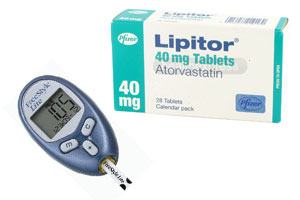I’m on vacation for a few days in a cabin without WiFi, so there will be no new posts until Monday night
The Toxicity of Sugar
In excessive amounts . . . for rats. The Washington Post reports on a recent study showing that
Sugar, even at moderate levels, could be toxic to your health — or at least to your sex life. Scientists at the University of Utah looked at how sugar affected mice and found that the mouse equivalent of just three sugary sodas a day had significant negative effects on life span and competition for mates.
“That’s three sodas if the rest of your diet is pristine and sugar-free,” said lead author and biologist James S. Ruff. “And those are 12-ounce sodas, not double Big Gulps.” Sugar-fed females died twice as quickly as control mice, which were fed the same total number of calories. While the sugar-fed males did not die more quickly, they had trouble competing against the control males for mates and were less likely to hold territory and reproduce. For the rodents on the sweetened diet, sugar accounted for 25 percent of their total calorie intake. Up to a quarter of Americans consume that proportion of sugar as part of their diets.
Of course, humans are not rats. But according to the study’s author, biologist Wayne Potts,
About 80 percent of substances that are toxic in mice are toxic for people as well . . so it is likely that the effects of extra sugar could be similar in humans.
I remember first finding the sugar jar as a child. It was a revelation to discover the essence and source of something so good. I don’t take away from this study that we need to stop enjoying birthday cakes or pies at Thanksgiving. Rather, sugar, like alcohol and so many of life’s pleasures must be enjoyed prudently.
The Appeal of CrossFit
There seem to be more and more people deeply involved in fitness communities. My wife and I attended a party a few years ago in which it appeared that everybody there except for us was part of an intensive workout regimen that a boxer-turned trainer ran out of his home. The appeal of such exercise communities seems clear. They address at least 3 major human needs. The first is the desire for friendships, community, and belonging. The second is to be a good steward of our bodies. It feels great to feel and look healthy. The third is a sense of accomplishment and growth. People in these programs are clearly gratified at the improvements they’ve made in strength and endurance. CrossFit has been especially deft at tapping into exercise-community Zeitgeist. As Ross Pomeroy reports:
Thirteen years have passed since Gregg Glassman founded CrossFit. In that time, over 6,100 affiliate gyms have opened, attracting thousands of professional and everyday athletes. What once was considered a fad has grown commonplace. Across the United States, thousands of gallons of sweat pour to the ground amidst struggled exhalations induced by intense workouts. It’s masochism on a never-before-seen scale.
What is CrossFit? Pomeroy explains that
CrossFit is an exercise program that blends strength and aerobic training into short, intense workouts. These workouts are often conducted once per day for three adjoining days, followed by one day of rest. In this respect, it’s very similar to high-intensity interval training. But what sets CrossFit apart is both the exercises it recommends and the mindset it imparts. CrossFitters employ a varied blend of dynamic, functional weightlifting exercises that recruit multiple large muscle groups — deadlifts, squats, snatches, and pull-ups, for example. At the same time, they eschew typical lifts like curls and those offered by weight machines.
CrossFitters combine these exercises into challenging workouts that often include speed and agility components as well. A typical CrossFit workout will recommend that the work be completed “for time.” In other words, the exerciser should complete the lifts as fast as possible. That’s where cardiovascular and competitive aspects enter. Most CrossFitters mightily struggle to set new personal records at every turn. Their workouts aren’t simply means to a goal (such as losing weight); they are the goals.
A recent study conducted at Ohio State University showed remarkable benefits from CrossFit workout methods.
Researchers assigned 54 healthy participants to a five-day per week CrossFit-based exercise program that lasted ten weeks. The 43 participants that competed the program saw incredible improvements in measures of aerobic fitness and body composition. Maximum aerobic capacity grew by 13.6% for men and 11.8% for women. At the same time, male participants’ body fat decreased from 22.2% to 18% and female participants’ fell from 26.6% to 23.2%. Both men and women also enjoyed significant increases in lean muscle mass. What’s more, the improvements in aerobic fitness and body composition were significant when broken down across participants’ initial fitness levels. In other words, people of all shapes and sizes saw tremendous physical improvements.
The only possible downside to CrossFit that the study revealed was a propensity for participants to develop injuries. Pomeroy reports that
Of the eleven subjects who dropped out of the workout program, nine cited overuse or injury as the key motivator for their choice to discontinue. Moreover, the injuries occurred despite the fact that all of the workouts were supervised by certified professionals.
Why do such injuries tend to occur with CrossFit?
CrossFit is often a fiery program, pushing participants to the very limits. Repeated fatigue can attenuate muscular control and cause exercisers to revert to poor form, creating an atmosphere conducive to potentially debilitating overuse injuries. Moreover, overexertion is a real concern. CrossFit trainers regularly warn about the dangers of fatigue-fueled rhabdomyolysis, where muscle breaks down rapidly and enters the blood stream, a condition that can lead to kidney failure.
Pomeroy concludes his report by writing
All in all, as the new study makes clear, the purported results of CrossFit are very real, but the potential drawbacks are, too.
Although I’m hesitant to add any more activities to my already full life, I’m curious to try Cross-Fit. I’d be interested to hear about any other people’s experiences with it.
How to Stay Healthy
Here are some common-sense principles for staying healthy.
Eat Well
Fill your plate with a colorful variety of fresh fruits and vegetables. These are low calorie foods filled with vitamins, minerals, fiber, and antioxidants. Avoid red and processed meat. Eat a greater amount of protein-rich foods such as seafood, eggs, beans, peas, soy products, nuts and seeds, and lean meats such as poultry. Decrease your intake of refined sugars. Eating this way will increase your energy and lower your risk of heart disease, diabetes, and certain cancers.
Exercise Often
Aim for at least 30 minutes of continuous aerobic exercise everyday. This will increase your energy, help you manage stress, improve your sleep, and lower your risk of developing heart disease, dementia, and mood disorders.
Prioritize your relationships with friends and family
In our fast-paced world in which there is always more to do, it is easy to neglect spending time with our loved ones. But a wealth of scientific research shows that people are most fulfilled when they are engaged in deep, nurturing relationships. Conversely, chronic loneliness has toxic health effects. A fascinating article linked here speaks to this point. So make time for your most important relationships, even if that sometimes means being less productive.
Don’t Smoke
Smoking markedly increases your risk of coronary artery disease, chronic obstructive pulmonary disease, and cancers of the oropharynx, lung, and bladder.
Get Your Regular Check-Ups
Check with your doctor to get your blood pressure and cholesterol measured and to make sure you are up to date on health maintenance measures such as vaccines and cancer screening.
Breast Cancer in Women with Dense Breasts
In my hospice work, I recently met a beautiful young woman who is tragically dying of metastatic breast cancer. Her family asked me and others to share her story in the hope that their experience can help other women. When her cancer was discovered, it had already spread and curative treatment was not possible. She had taken very good care of herself and had always done her annual mammogram. But she was told that her breast cancer had not been detected on her screening mammogram because her breasts are dense.
What are Dense Breasts?
Breast tissue is composed of fatty (nondense) tissue and connective (dense) tissue. About 40% of women who have mammograms have dense breast tissue. On mammograms, fat in the breasts produces a dark background that makes breast cancer, which appears white on mammograms, easier to detect. In contrast, the connective or dense tissue in breasts appears white on mammograms. This makes it harder for radiologists to detect breast cancer. For an illustration of this concept, see images from a website for the non-profit organization Are You Dense?, which seeks to make women aware of how screening mammograms can miss cancer in women with a higher proportion of dense breast tissue.
What Should You Do if Your Breasts Are Dense?
This is a point of debate among experts in breast cancer screening. Performing breast ultrasounds or MRIs in all women with dense breast tissue will detect cancer in some women who have negative screening mammograms. But doing these additional tests will also pick up many false positives, exposing women to unnecessary anxiety and biopsies. Therein, lies the the point of disagreement. Many states, including Texas, have passed laws requiring that radiologists notify women who have dense breasts as observed on screening mammograms. My own take is that we doctors should discuss this issue with women found to have dense breasts on mammograms. We can then work together to make a decision that makes sense to them.
Here are some articles from the New York Times, Wall Street Journal, and Medscape further discussing this issue.
The Mind-Gut Bacteria Connection
The Verge has an interesting article discussing the link between our gut bacteria and mental health. It starts with the story of parents seeking help for their teenage daughter, Mary, who was struggling with obsessive-compulsive disorder (OCD) and ADHD. Having tried “a litany of psychotropic medications,” the parents consulted Boston-area psychiatrist James Greenblatt. After learning that Mary also had a history of digestive problems, Greenblatt prescribed high-dose probiotics, “the array of helpful bacteria that lives in our gut.” She also continued to work with medications and therapy. The article reports that upon starting the probiotics, “the change in Mary was nothing short of miraculous: within six months, her symptoms had greatly diminished. One year after the probiotic prescription, there was no sign that Mary had ever been ill.”
The bacteria in our bodies outnumber our own cells by a ratio of about 10 to 1. And scientists are more and more discovering that our bacterial buddies don’t just idly live in our bodies, but play a major role in our functioning. For example, in one study, “researchers transplanted microbes from one group of mice, which were characterized by timidity, into the guts of mice who tended to take more risks. What they observed was a complete personality shift: timid mice became outgoing, while outgoing mice became timid.”
Most of the bacteria that live in our gut are acquired during birth when we pass through our mother’s birth canal. But the foods we eat, antibiotics we take, and many other factors can modify our microbiome over time.
While we are learning more about the the importance of the bacteria in our bodies, we are still at a primitive, early stage in applying this knowledge therapeutically. In my medical practice, I have never encountered such a straightforward success story with probiotics as is described in The Verge article. How to replete the gut with the right balance of bacteria to promote optimal health is still being worked out. In the meantime, I don’t hesitate to recommend a trial of probiotics to patients with with irritable bowel syndrome (IBS) and other health issues that might be helped with better bacteria.
For another interesting article on our gut bacteria, see this New York Times article.
Do Statins Cause Diabetes?
The statins are the most commonly prescribed cholesterol-lowering medicines. They include Lipitor, Crestor, Zocor, and Pravastatin. Of the cholesterol medicines, statins have the best evidence for lowering the risk of heart attack and stroke. Indeed, the widespread use of statins in people with or at risk for heart disease is at least partially responsible for the decreasing mortality from heart disease over the past few decades.
But nothing good in life or medicine comes without a cost. With statins, the most common side effect is muscle aches. Some studies have estimated that as many as 20% of people on statins experience this symptom, which usually goes away when the medicine is stopped.
A more recent concern about statins is that they may increase the risk of developing type 2 diabetes mellitus. Some of this concern comes from a 2011 study published in the Journal of the American College of Cardiology (JACC) that examined data from 3 large clinical trials. These trials took people with cardiovascular disease and compared those who took high-dose Lipitor and those who either took a placebo or a low-dose statin. Overall, these studies showed that people who took high-dose Lipitor had a slightly increased absolute risk of developing diabetes. For instance, in one study people at the end of 5 years, 9% of people who took Lipitor developed diabetes versus 6% of those who took placebo. The people who had the higher risk of getting diabetes were either overweight, had high blood sugar, high blood pressure, or high high triglycerides. So these were people prone to get diabetes anyway. Lipitor may have further increased their glucose level into the diabetes range.
So what should we take away from this? Should we stop taking Lipitor and other statins out of fear that they will cause diabetes? The authors of the study say just the opposite. They write, “the risk of developing new-onset diabetes is greatly outweighed by the benefit in reducing cardiac death, heart attack, and stroke.” But this study does illustrate 3 important points:
1) Even wonder drugs like statins have potential drawbacks. Therefore, doctors and patients need to make sure that a patient really needs to be on a statin before starting it. The people who should be on statins are folks that have cardiovascular disease or are at increased risk for it.
2) People taking statins should have their blood sugar levels monitored on their routine blood tests.
3) Taking a statin to lower cholesterol isn’t a license to let yourself go. It’s still crucial to exercise regularly, eat well, and do the other stuff that makes up a healthy life.
Should You Get Screened for Prostate Cancer?
Part of my annual physicals with patients is reviewing a health maintenance checklist. I verify that they are up-to date with age-appropriate vaccines, cancer screening tests, and other preventative measures. For men over age 50, we discuss whether to screen for prostate cancer. At first, it may seem like a no-brainer to screen for any kind of cancer. But with prostate cancer, the decision whether or not to screen is not so straightforward. In this post, I’ll provide some basic information about prostate cancer that I hope will be helpful.
What is the prostate?
It is a gland that sits below the bladder and in front of the rectum. It forms a ring around the urethra, the tube takes urine out of the body. The prostate gland’s function is to secrete fluid that takes sperm out of the body.
What is prostate cancer?
In prostate cancer, the cells of the prostate become abnormal and grow out of control. Prostate cancer can spread to other parts of the body and ultimately cause death.
When should I be concerned that I might have prostate cancer?
It becomes more common as men age, most prevalent in men over age 50. Some symptoms of prostate cancer are needing to urinate more frequently and having a urine stream that is slower than usual. However, these symptoms can be from other health conditions such as having an enlarged prostate.
How do doctors test for prostate cancer.
There are two initial tests. The first is the rectal exam in which the doctor puts their finger in the rectum and presses on the rectal wall to feel for abnormal areas on the prostate. The second is the PSA blood test. PSA can be high for other reasons besides prostate cancer. For example, having a big prostate, having a prostate infection, and having recently had sex can all make the PSA high. So if the PSA is high, it is usually repeated to see if it stays high.
If the PSA or rectal exam suggests cancer, what comes next?
Usually a urologist performs a biopsy of the prostate in which they get tissue from the prostate to be examined under the microscope.
What are reasons why I should get screened for prostate cancer?
One large European study showed that after 9 years, men who had done PSA testing had a 20% lower chance of dying of prostate cancer. 34,000 men die each year of prostate cancer and it can be a painful death. It is second only to lung cancer in causing cancer-related deaths in men. For men with aggressive prostate cancer, the best way of curing it and preventing death is catching it early by doing the PSA test. If prostate cancer is caught early, the cure rate is nearly 100%
So why wouldn’t you want to get tested for prostate cancer?
Many prostate cancers detected with screening are unlikely to cause death. These cancers would never have spread beyond the prostate and have harmed the man. One European trial says that you have to treat 50 men with prostate cancer that was never going to bother them in order to prevent one death from prostate cancer. Treating non-aggressive prostate cancers can cause frequently serious problems like impotence and incontinence. In fact, roughly half of all men who receive radiation or surgery have incontinence and impotence. So many men are receiving a harmful treatment for little benefit.
Once a prostate biopsy is done, can doctors predict if they prostate cancer will be aggressive and life-threatening?
The PSA score, the way the prostate cancer looks under the microscope (Gleason score), and how far is has spread help predict how threatening the cancer will be.
Bottom Line
Men must weight the potential benefits of screening against the potential harms. One strategy is to screen for prostate cancer only in men with an increased risk of aggressive prostate cancer, such as men of African ancestry and those with a family history of prostate cancer. Another approach is to broadly screen for prostate cancer, but closely monitor, rather than treat men with prostate cancer that is not aggressive. In my conversations with patients, we discuss the pros and cons of prostate cancer screening and do our best to arrive at a decision together.
The Digital Health Revolution: A Mixed Blessing
The recent revelation of the NSA’s top-secret mass surveillance program by Edward Snowden has spotlighted the benefits and burdens of our increasingly digitally connected world. According to President Obama, monitoring our phone calls, emails, and web activity has helped thwart dozens of terrorist attacks. But the idea of the government keeping track of what had hitherto seemed private raises the specter of an Orwellian world in which everyone is under constant surveillance by “Big Brother.”
The growing and changing use of information technology in the delivery of health care is likewise a mixed blessing. As a primary care physician, I often encounter patients and their problems without access to a record of the care they received elsewhere. Knowing what tests have been run and treatments tried would enable me to provide more effective, efficient care and avoid wastefully duplicating services. To this end, governments and hospital systems are establishing health information exchanges (HIEs) that allow patients’ data to be seamlessly shared by practitioners. These exchanges also promise to provide a rich database for researchers and public health authorities.
But electronically collecting and sharing millions of Americans’ health information presents the real risk of large-scale privacy violations. A wide variety of individuals, from clinicians and clerks to government and insurance company employees will have access to among the most sensitive and intimate aspects of our lives. It is all too plausible that somebody seeking notoriety or a thrilling display of power could take it upon himself (a la Wikileaks) to disseminate millions of individuals’ health data on the world wide web. Perhaps more concerning are the subtler yet still serious privacy violations that are likely to regularly occur. Thus, it is crucial that our ethics, laws, and privacy protection technologies keep pace with the threats to privacy inherent in the growing and evolving use of health information technology.
Health information technology will also play an increasing role in how we pay for health care and judge its quality. The current fee for service system rewards the volume of services delivered rather than how well they make us. This is believed to result in a number of excessive and sometimes even harmful interventions. Health information technology should facilitate better measuring quality of care. Utilizing this data will enable the government and insurers to pay for good results, rather than for merely more tests, hospitalizations, office visits, and procedures. Patients will also be better equipped to select hospitals and practitioners with a record of robust outcomes.
But this commendable quest to measure and pay for performance carries the risk of overshadowing and deemphasizing less quantifiable yet equally vital components of the healing profession. It is surely important to control blood pressure, cholesterol, and diabetes, to avoid complications from surgeries and hospitalizations, and to prescribe the best medications. But there is much more to being a good doctor than this. There is pulling together the disparate elements of a long-suffering patient’s story and arriving at an elusive diagnosis. There is breaking the bad news of dementia, autism, or cancer honestly, but without taking away all hope. There is discerning when an anxious patient with a headache needs reassurance or an urgent MRI. There is being a compassionate presence and a trustworthy guide during the most trying moments of a person’s life. There is taking the time to learn what gives meaning and purpose to a patient’s life and arranging his or her care accordingly. It is quite difficult, if not impossible to measure these virtues and character traits, to put a numerical value on these essential elements of the healing arts. So if quality is defined solely by what can be quantified, we risk creating a culture that values certain marks of technical excellence, but neglects the human, personal art of care. The result could be a practice of medicine greatly impoverished for both patient and physician.
Preserving the human touch in healthcare does not mean resisting its growing use of information technology. It is inevitable that the digital revolution will transform the way healthcare is delivered, yielding improvements in quality, cost, and convenience. But even as we enjoy and celebrate these changes, it is essential to honor and preserve important values such as patient privacy and the personal art of care.
How to Get a Good Night’s Sleep
Scientists studying sleep are still working out what exactly goes on in our brains during our nightly shut-eye. But we do know that getting sufficient high-quality sleep is important. Inadequate sleep has been tied to higher risks of heart disease, obesity, diabetes, and other maladies. And just as important, we have all experienced the fatigue, emotional lability, and mental fogginess that come with not getting enough Zzzzzzz’s.
But getting sufficient sleep is easier said than done. I can relate with many of my patients in sometimes finding it difficult to get and stay asleep. Here are some evidenced-based tips for getting the sleep you need.
Keep a consistent bedtime and wake-time. Our bodies get used to going to bed and getting up at certain times. Disrupting this internal rhythm, by excessive napping, staying up late, or sleeping in is a recipe for insomnia.
Avoid caffeine after noon. The stimulatory effects of caffeine stay in your system several hours after intake.
Get regular exercise. Studies show that exercise improves sleep quality.
Keep your bedroom cool. Our bodies’ temperature decreases when we sleep. A cool sleep environment mimics this activity.
Take time to calm your mind before bed. Dedicate 30-60 minutes before bedtime to something that relaxes you. A warm bath, a pleasurable novel, meditation, etc. Doing this will not only help you get to sleep, but improve your sleep quality. Avoid bright lights from your computer, phone, or television since this simulates the activating effect of the sun.
Don’t clock-watch. If you get up during the night, avoid looking at what time it is. This will likely cause anxiety about how much time you have left to get the sleep you need. Revving up your system with such thoughts will make it even harder to get back to sleep. So hide your alarm clock in a drawer or cover it with a book.
Limit alcohol before bedtime. Although alcohol may help you get to sleep, it impairs sleep quality and makes you more likely to wake up during the night.
Keep your bedroom dark and quiet.
Use your bed only for sleep and sex. You want to condition your mind to associate your bed with sleep, not reading, thinking, talking, and other activities.
If you wake up during the night and can’t go back to sleep, get up and do something relaxing. Don’t try to fight your way back into unconsciousness.








